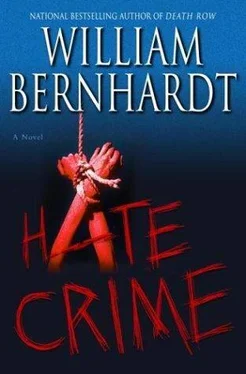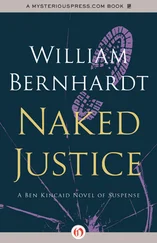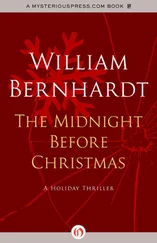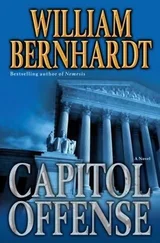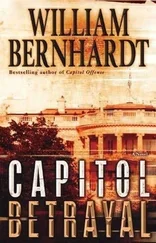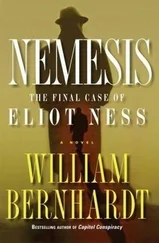“Second, I am not here to convince you that my client, Johnny Christensen, is a great human being. He isn’t.” Ben could almost feel Ellen’s eyes boring into him, not to mention Johnny’s. Never mind. He knew what he was doing. “He was neither good, nor kind, nor nice the day Tony Barovick was killed. He was mean and brutal and ignorant, and in many respects he represents the very worst part of this country, the faction that finds it acceptable to commit acts of cruelty and violence in the name of some higher cause. My partner has been trying to convince me Johnny’s not that bad, just misguided and poorly educated, but I’m not buying it. Frankly, I don’t even like sitting at the same table with him.”
Ben watched the eyebrows of more than one juror rise. Well, at least now he had their attention. “And you know what? I don’t mind telling you that, either. Know why?” He leaned over the rail. “Because it doesn’t matter. None of it matters. Whether you like him or you don’t doesn’t matter .” He paused. “I know you’re not stupid people. I know you won’t be led by your emotions. If you convict-and that is an if -it will be because of the facts presented to you at this trial, and not because you do or don’t like someone.”
Ben walked slowly to the opposite end of the rail. “Now let me clearly state that we do not disagree with much of what the district attorney has said. We will not try to dispute the undisputed facts. Johnny Christensen did participate in the beating of Tony Barovick. We acknowledge that. But he was not the principal actor in that crime and, most significantly, he did not kill Tony Barovick. His cohort, Brett Mathers, did not kill him. Nor did Tony Barovick die from the beating. They left him in a vacant lot seriously injured, to be sure, but very much alive.”
Ben didn’t detect much reaction from the jury. Many probably thought he was splitting hairs. Okay, Johnny beat him to the edge of death but didn’t deliver the finishing stroke-big deal. But that kind of thinking was exactly what Ben wanted. Because the charge brought by the district attorney was not aggravated assault, not even manslaughter. It was murder-murder in the first degree. If he could convince the jury that Johnny did not deliver or participate in the delivery of the death stroke, there was just the tiniest chance he might come out of this trial alive.
“You may have noticed that the DA didn’t say anything about how Tony got to the fraternity house-because the investigators don’t know. They’ve scrutinized the vehicles belonging to Johnny and his partner-and found nothing. The DA didn’t say anything about what actually caused Tony’s death-because they’re a little fuzzy on that point, too. They can’t tell you to what extent the illegal drug trade at Tony’s club-which Johnny Christensen had nothing to do with and played no part in-may have created a motive for murder.
“The DA would suggest that this is an open-and-shut case, but there are, in fact, many unanswered questions. And that’s a problem. Because you can’t convict a man just because you don’t like him, or because he did something else that was bad. You can’t convict when you don’t really know what happened, or where, or who did what. In order to convict my client of the crime with which he has been charged, you must find him guilty beyond a reasonable doubt. Think about that. Beyond a reasonable doubt. That’s a very high standard. And it’s one that the district attorney, for all his good intentions, simply can’t make.”
Ben buttoned his jacket, turned and took his seat, careful not to let his eyes wander toward his client-or his client’s mother.
It had started. Let the games begin.
If television legal dramas were required to play out a trial in real time, Ben mused, there would never be another lawyer show. In fact, there would never have been a first; Perry Mason would have sunk into obscurity. Because even with a case as dramatic and extraordinary as this one, 75 percent of the trial was dull as dust. The endless procedural rigmarole could bury any viewer’s interest-all the procedural hoops the law required, the painfully protracted process of establishing foundations and complying with the increasingly complex rules of evidence. The constant interruptions for bench conferences, jury breaks, the judge stepping out to attend to other business. Small wonder every legal drama he’d ever seen had taken outrageous liberties with reality. Jury trials need a good editor to keep them interesting.
And this trial was no exception. Despite the packed room full of spectators desperate for action, Judge Lacayo first went through his preliminary instructions to the jurors, parties, and counsel, making a record of everything the appeals court might want while the court reporter took it all down. Even after Drabble started putting on the prosecution’s case, the excitement level did not increase much. His first three witnesses were purely pro forma types, establishing elements everyone knew and no one disputed but that were necessary to lay a proper foundation in the event of an appeal: such as establishing that a person had died, and that the person was Tony Barovick.
It was not until the fourth witness, called after the lunch break, that the witness stand began to heat up. And even that was not immediate. First the prosecution had to establish the police officer’s experience, years of service, flawless record, qualifications, yadda, yadda, yadda…
“Officer Montgomery,” Drabble said eventually, “please tell us what you were doing shortly after midnight on the morning of March 22.”
“I was patrolling in my vehicle with my partner, Officer Raymond, in the area of Phillips College when I received a call on my radio.”
“And what was the call?”
“An anonymous tip about a possible 510 at the Beta house on campus.”
“Did you respond?”
“Of course.” Montgomery was a slim man with an erect, almost stiff, bearing. He struck Ben as an honest man, and he conveyed that sense to the jury in his testimony. “We were the closest vehicle in the area. I notified campus security and proceeded to the fraternity house.”
“When did you arrive?”
“A few minutes after midnight. We approached the front door. I knocked and called out, but there was no response.”
“What did you do?”
“The door was open, so we went inside. We soon entered one of the side rooms-a den or sitting room or something. That’s where we found him.”
“And by him you mean…”
“Tony Barovick. We didn’t know that was his name at the time, of course. All we saw at first was… the mess.”
The transformation of the officer’s face was, Ben did not doubt, unintentional, but quite evident just the same.
“Would you please describe what you saw?”
Despite his obvious reluctance, the officer answered the question. “You could see at once that something was very wrong-the boy’s legs were twisted back at unnatural angles. His clothes were torn and soaked with blood. His face had been cut. There was some kind of burning on his face. Like he had been… cooked or something. And his legs…” The officer shook his head, taking a deep breath to maintain his even tone. “Well, his legs were like hamburger meat. All pulped and shattered and… gone.”
“Could you tell if he was still alive?”
“There was no way that poor kid could be alive. But I took his pulse-standard procedure. He didn’t have one.”
“What did you do next?”
“Called homicide, naturally. Called the coroner’s office.” He grimaced. “Sent my partner out to get my coat. It was warm outside, but it was cold in that frat house. Or maybe it just seemed like it-with that mutilated body. Gave me the chills.”
Читать дальше
